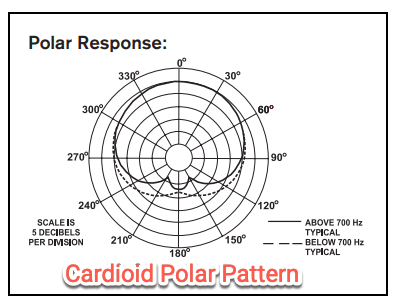
As someone with plenty of experience with the Electro-Voice RE20 large diaphragm dynamic microphone, I’ve always wondered about the difference between its more affordable and identical-looking sibling, the RE320.
Both microphones have earned their reputation as fantastic broadcasting, bass cab, and kick drum microphones. However, as you peek underneath the hood and start recording, you’ll quickly see that these microphones are different, and each has its strengths and weaknesses.
The Short Answer
The Electro-Voice RE320 has a brighter and more open response. It also has higher output, so you’ll need less gain from your preamp.
Its dual-voicing control feature is a standout aspect, enabling this microphone to switch between two frequency responses—one optimized for vocals, guitars, and other instruments where you may want more “air,” and the other caters specifically to kick drums and more bass-focused instruments.
In contrast, the Electro-Voice RE20 delivers vocal voices with a distinct, focused, mid-range sound. This makes it fantastic for male voice-over work, guitar amps, and brass instruments.
Before we proceed with a more detailed breakdown and declare a winner, I want to thank Sweetwater for sending me the RE20 and the RE320 for this review. Without their amazing support, this article wouldn’t have happened.
Let’s go!
Table of Contents
The Magic of the Electro-Voice RE320 & RE20
Design
Both the RE20 and the RE320 are built like tanks. Each one weighs shy of 2 pounds. Everything from the casing, grill, and clip is made of metal.
The internal construction of the RE20 & RE320 has a “blast filter” that protects every opening in the microphone. It also acts as a shock mount to the internal components of this microphone. These aren’t delicate and dainty microphones.
What does this mean practically?
This microphone is built to withstand humidity changes, accidental drops, and different air pressure levels due to elevation. This is a workhorse microphone that is great for taking on the road and for studio recording.
Both the RE20 and RE320 also feature a humbucking coil. If you’re familiar with electric guitars, humbucking pickups reduce/remove 60-cycle hum generated from a single coil. The benefit to you is an extremely low noise floor with both these microphones. This means you can turn up the gain on your preamp without worrying that you will introduce unwanted noise.
This is extremely helpful for the RE20 as it has less output than the RE320, which we will discuss later in this review.
Polar Pattern
The RE320 and RE20 feature a cardioid polar pattern. The benefit of this polar pattern is the extreme rejection of sound from the back of the microphone. This helps you reduce unwanted room noise and reflection.

The one thing I love about the way that both the RE20 and the RE320 pickup-up sound is that even when you’re off-axis (the noise isn’t going directly into the mic’s capsule), you don’t get much coloration or tone change.
I love this characteristic because it makes for a great vocal mic. Often as singers or podcasters, we move around as we are performing. Sometimes with ultra-sensitive microphones like condensers, you’ll hear tonal and volume variations that can get distracting.
The RE20 and RE320 pick up these subtle variations without being noticeable.
Variable-D Technology
Electro-Voice’s Variable-D Technology is a critical feature that sets the RE20 & RE320 microphones apart.
The Variable-D Technology eliminates the bass build-up associated with the proximity effect, providing a flatter frequency response, regardless of the position or distance between the microphones and the sound source.
From my experiments using this on kick drums, 8×10 bass cabinets, and vocals, I can verify that the Variable-D Tech does exactly as advertised. You get a smooth frequency response that won’t over color the source material.
Popular Uses
Here are some popular uses of both the RE320 and RE20 microphones:
- Broadcasting and podcasting
- Vocals
- Horns
- Electric guitar and bass amps
- Kick drums and toms
The RE20 and the RE320 are versatile mics and can be used for various recording and sound reinforcement applications. They especially shine with instruments with lots of bass and high sound pressure levels.
Connection
Electro-Voice RE320 and RE20 microphones have an XLR connection, a standard output for most professional microphones.
You must use a preamp to boost the signal to line level. This will dissuade users looking for a more straightforward solution, like a USB microphone.
Electro-Voice RE320 vs RE20 | The Differences
Audio Differences
In terms of audio quality, both the RE320 and RE20 are excellent microphones for similar recording and sound reinforcement tasks.
The RE320, to my ear, has more emphasis on high-end frequencies. It is a bit brighter and, because of this, has a more “smeared image.” This isn’t a con necessarily; however, know that this microphone may better suit live applications and acoustic instruments where you want more “forward presence.”
One thing that does change the sound quality of the RE320 compared to the RE20 is that it has a higher output. This is thanks to the neodymium magnet structure in the mic. This accentuates the extended frequency response in the high-end and needs less gain from a preamp which can reduce noise.
On the other hand, the RE20 has a more focused audio signal. To my ears, this microphone’s response has more depth and mid-range presence. For example, it delivers a richer and warmer sound on vocal performances, making it the best vocal mic for recording or broadcast situations.
Design Differences
As mentioned previously, the RE320 and RE20 share lots of design similarities. They are almost identical microphones, but some key differences exist.
The RE20 features a “bass tilt-down switch” that reduces low frequencies by 2.25 dB per octave from 400 Hz. This is a high-pass filter that reduces the bass response of the microphone.
On the other hand, the RE320 has a bass boost switch designed for kick drums, giving you instant punch without much need for EQ.
Another design difference is with the neodymium magnet structure. This design feature is found in the RE320 (and RE27), resulting in a more aggressive and transient-rich response.
Price Difference
This is the big one when considering whether or not to go for the RE20 or the RE320.
As of me writing this review, the RE20 is $449 & the RE320 is $299.
Manufacturing Difference
The RE320 parts are manufactured in China and have a slightly thinner diaphragm. The RE20 is manufactured in the US. The manufacturing location will play into the price of the two microphones.
Live sound examples
Vocals
Regarding recording vocals, I found the RE20 shines due to its warm and focused sound. This microphone suits voice-over work, podcasts, and broadcast situations.
The RE320 can deliver clear and lively vocals, but for a pure vocal performance, the RE20 stands out.
Check it out…
Electric Guitars
For recording electric guitars, both the RE320 and RE20 performed exceptionally well. The RE320’s versatility with dual-voicing control can handle different voices and guitar tones, making it a solid choice.
Alternatively, the RE20’s more focused sound works great for more punch, midrange sounds.
Take a listen…
Clean Electric Guitar
Distorted Electric Guitar
Acoustic Guitars
I found that the RE320 and RE20 can produce high-quality recordings of acoustic guitars. It ultimately comes down to personal preference and the specific tone you’re aiming for in your recording.
Listen to the following clips to see which you prefer for yourself.
FAQ
Does the RE320 Need a Pop Filter?
The RE320 benefits from a pop filter for vocal performances, as it can help reduce plosive sounds and wind noise to maintain consistent audio quality.
Although the RE320 may already exhibit minimal plosive issues, adding a pop filter ensures a cleaner and clearer vocal recording.
Does the RE20 Need a Pop Filter?
Like the RE320, the RE20 can also benefit from a pop filter. Despite its built-in windscreen, some plosive sounds may still be present.
A dedicated pop filter can minimize these sounds and improve the recording quality.
What Is the Difference With The RE27?
The RE27 is another microphone model in the Electro-Voice series. It is often compared to the RE320 and RE20 due to having the same design and look. The RE27 has a neodymium magnet, increasing the output and brightness like the RE320.
The RE27 is fickle and might be the least flattering, depending on the sound source (especially with vocals).
Does the RE20 Need a Cloudlifter?
Using a Cloudlifter with the RE20 can be helpful in certain situations. The RE20 has a relatively low output level.
A Cloudlifter can provide additional gain to the microphone, allowing for clearer recordings without increasing the gain on the audio interface or mixer.
This can result in a cleaner signal with reduced noise levels. However, considering the RE20 already has a very low noise-to-signal ratio, it is not always necessary.
Does the RE320 Need a Cloudlifter?
The RE320 doesn’t need a Cloudlifter. The output is hot enough so preamps and audio interfaces can amplify the signal without any issue.
The Winner?
After comparing the Electro-Voice RE320 and RE20 microphones, I have to say that both are fantastic choices for musicians and podcasters.
But, if I had to choose between the two, I would go with the RE20.
But why?
To my ears, it has a more focused audio signal with more depth and mid-range presence. It delivers a richer and warmer sound on vocal performances, making it the best vocal mic for recording or broadcast situations.
Don’t get me wrong; the RE320 is also an excellent microphone, with a brighter and more open response and a dual-voicing control feature that allows you to switch between two frequency responses. However, I prefer the RE20’s neutral sound, as it suits my preferences and recording needs.
Ultimately, the choice between the RE320 and RE20 will depend on what you’re looking for in a microphone. Both are great options, and you can’t go wrong with either one.

